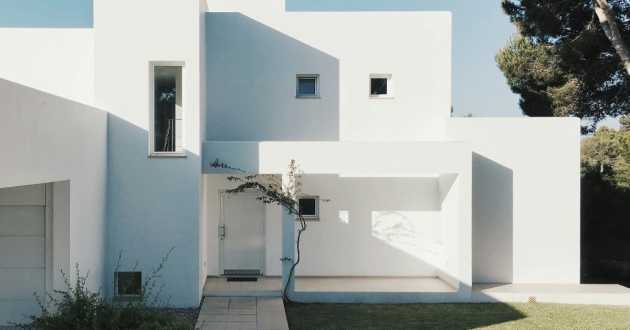3 Best Drainage Solutions For Your Flat Roof
- - Category: Constrution
- - 04 Nov, 2019
- - Views: 882
- Save
Both commercial and residential flat roofs need specific drainage solutions to get rid of water.
Flat roofs can be incorporated into residential and commercial buildings with different architectural designs. They are ideal for places that don’t experience huge quantities of moisture or rain on a regular basis. Apart from adding an aesthetic appeal, the roof should be durable and resistant to changing weather conditions to avoid damage. However, the most common problem faced by this type of roofing is drainage. Unlike other roofs that drain water automatically, a flat roof needs a specialized, built-in drainage system to get rid of debris and water. Failure to do so can result in popped nails, pulled-away flashing, gravel being washed away and exposed railheads. These can lead to further issues such as a leaking roof and damaged roof deck. To avoid these problems and increase the life of your building, read this blog post to find out about the best drainage systems for flat roofs.
4 Types of Drainage Systems for Your Flat Roof
1. Roof Scupper
Scuppers are one of the most effective drainage systems for flat roofs, allowing accumulated water to drain off properly. This system uses large square openings along the roof’s edges and allows water to run along the wall through a metal box that surrounds the scupper. You may choose to install a downspout directly below the openings to drain the water in a controlled manner. However, if you can’t install one, the scupper can be extended beyond the building’s surface to prevent it from getting wet. They are the best choice for draining water from your flat roof because:
- Custom scuppers add architectural appeal to your building
- They are a low-cost alternative
- The water drains away from the building instead of along the wall
- Little to no maintenance is required
- With large scuppers, there’s no need to worry about clogging
2. Internal Drains
This affordable drainage option can be incorporated into your existing system. They work just like the drains in your sink and shower by leading water to the system of pipes already installed underneath the roof. The collected water travels through pipes to the gutters below or on the side of the building. They are mainly found on structures with large roofs, and the drains are generally placed in the centre of the building. They may require the installation of copper or aluminum inserts in those areas where water most commonly collects to keep it from destroying the property. Some reasons why they might be a perfect fit for your home are:
- These drains don’t crack or freeze during the winter as the walls provide natural protection.
- They protect the foundation and walls against water damage.
- They can be customized to improve your building’s curb appeal.
3. Gutters
This is the most common drainage system, used for all types of roofing. They work by collecting rainwater and diverting it to a downspout which dispenses it at a distance from the building’s structure. They help prevent water from rolling off the building in an uncontrolled manner and running down the sides, resulting in damage to the foundation, siding and windows. You should consider installing gutters on your flat roof since they are:
- An inexpensive option
- One of the easiest systems to install
- Great at preventing water from pooling near the foundation
These are three of the most common drainage systems for flat roofs. They offer the best solution for both commercial and residential buildings. Sadly, most property owners fail to realize the necessity of having a suitable drainage system to help prevent future damage from erosion, mould growth and insect infestations. When choosing a system for your building, always rely on experienced flat roofing contractors for proper installation. This can save you from major roof repair costs in the future.


